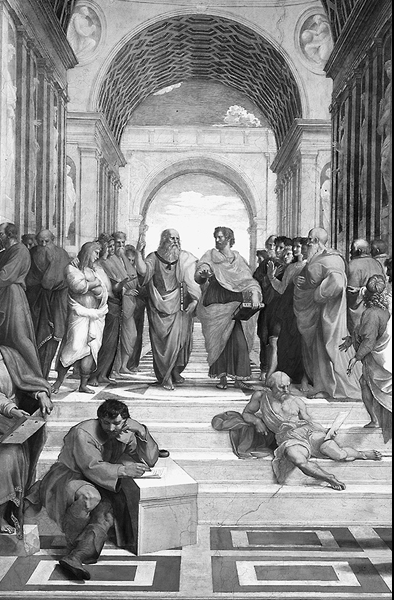Truth is not a stone monument but a living tree, its branches stretching toward new light with every season. Consider how we once believed the Earth was flat — a “truth” that crumbled under the weight of new evidence. In my previous reflection, The Humble Student Seat, I explored humility as the gateway to wisdom, a willingness to set aside pride and embrace wonder. Now, we must go further: to see truth as dynamic, ready to evolve as new insights challenge our deepest beliefs. Like gardeners tending the Tree of Knowledge, we prune and nurture our understanding, not out of doubt, but from a commitment to wisdom’s growth.
In a world increasingly entangled with artificial intelligence (AI) — systems that must adapt, retrain, and evolve based on new data — we, too, are invited to a higher standard of intellectual humility. Just as AI models are not shamed for learning but are praised for refining their understanding, so too must humans learn without shame, and revise without fear.
Truth as Metaphor: Nietzsche’s Revolutionary Vision
Friedrich Nietzsche’s provocative idea that truth is “a mobile army of metaphors, metonymies, anthropomorphisms” is a powerful starting point. In On Truth and Lies in a Nonmoral Sense, Nietzsche contends that truth is not something inherent, fixed, or easily grasped; rather, it is a product of human invention, shaped and reshaped over time. The “truths” we uphold are nothing more than metaphors that have lost their sensuous power, much like worn-out coins that no longer bear their original imprint. These “truths,” when repeated often enough, become so deeply ingrained in society that they are forgotten for what they truly are — metaphors — becoming sacred, seemingly unchallengeable. We created the habit of repeating something we did not really validate — they are, in reality, unexamined conventions.
Nietzsche’s insight pushes us to reconsider what we hold to be true. If truth is merely an illusion that has been mistaken for something unchanging, how do we re-engage with it? Nietzsche urges us to become more like the philosopher who views every established truth with a critical eye, questioning its origins and its current relevance, much like an AI constantly adapting its understanding based on new data and patterns.
The Tree of Knowledge and the Serpent’s Wisdom
In Beyond Good and Evil (§152), Nietzsche presents a vivid image of knowledge as paradise itself. “Where the tree of knowledge stands, there is always paradise: so speak the oldest and the youngest serpents.” This metaphor draws upon the imagery of the biblical tree of knowledge, but with a crucial twist: the pursuit of knowledge is not a fall from grace, but an invitation to a deeper, more vibrant existence. The serpents, often symbols of wisdom and transformation, remind us that the pursuit of knowledge is an act of continuous transformation, one that requires us to remain open to revisiting the roots of our understanding.
This metaphor invites us to think of truth as a garden we tend to continuously — one where new discoveries can shift our perspectives, forcing us to reconsider what we thought we knew. Just as an AI processes new inputs, human understanding must be willing to confront its own assumptions, constantly evolving.
Embracing the Cycles of Learning: From Nietzsche to the Humble Student
The analogy of knowledge as a Tree of Knowledge, constantly growing and changing, finds resonance in the humble student’s journey. To quote Diotima in Plato’s Symposium (204a), wisdom and love are interlaced, guiding the student through continuous learning. The student must recognize their own ignorance, not as weakness, but as the condition for growth, revisiting knowledge as science evolves. Knowledge isn’t something we possess but something we engage with, a process of questioning and refining, much like AI. As Diotima notes, “he who is neither good nor wise is nevertheless satisfied with himself: he has no desire for that of which he feels no want.” The humble student, however, strives for wisdom, driven by an insatiable pursuit of deeper understanding.
Heidegger’s view of “being” and “understanding” offers a compelling lens for both human and AI learning. For him, understanding isn’t passive — it’s an active, interpretive engagement with the world, much like a gardener tending the Tree of Knowledge. This resonates with how AI models work: they don’t just store data but actively build models, predicting patterns and relationships. Both human and AI learning are acts of cultivation — humans, guided by curiosity and wonder, seek to grasp the world’s mysteries, while AI, driven by algorithms, refines its performance with new data, each nurturing the tree in its own way.
There’s a fascinating parallel between how AI builds models and how humans learn through synapses — the connections in our brains. Both aim for efficiency: AI processes data faster as its models improve, while our brains strengthen synapses with use, making memories or skills easier to recall. For example, the more AI analyzes texts, the better it predicts patterns; the more we practice a skill, the stronger those brain connections become. But the processes differ: AI relies on algorithms, while our brains use electrical and chemical signals to communicate. Moreover, human learning is shaped by consciousness, emotions, and values — elements AI lacks. Still, both share a goal: to process information more effectively, each tending the Tree of Knowledge in its own way.
Like Socrates, who declared, “I know that I know nothing” (Plato’s Apology), we must embrace the limits of our understanding. Wisdom arises not from accumulating answers but from pursuing better questions — a Socratic paradox foundational to the humble student’s journey. This requires emptying the mind of preconceived notions and approaching the world with openness to new perspectives, nurturing the ever-growing Tree of Knowledge.
The Role of the Abyss: Confronting the Unknown
Nietzsche’s aphorism “He who fights with monsters should take care not to become a monster in the process. And if you gaze long into an abyss, the abyss will also gaze into you” (also Beyond Good and Evil §146) highlights the dangers of becoming too attached to a particular truth or worldview. Just as the AI must avoid overfitting to a narrow set of data, humans too must be wary of becoming trapped within their own narrow perspectives, lest they lose the ability to evolve and learn. The abyss Nietzsche refers to is not merely the unknown, but the trap of rigid thinking — an unwillingness to confront or evolve when faced with contradiction.
Paradigm Shifts: AI and Humanity in Mutual Learning
Humans and AI share a common pursuit: adapting to new truths in an era of information abundance. Consider a language model like Grok or ChatGPT, refining its responses by analyzing millions of texts. For AI, the data deluge is an advantage — the more information it processes, the more accurate its models become, avoiding the trap of “overfitting1” to outdated patterns. Humans, however, face a challenge: the sheer volume of data can overwhelm, leading to confusion or bias. Yet, by revising our worldviews — whether through scientific discoveries or shifting cultural narratives — we deepen our understanding, pruning flawed beliefs.
This pursuit of truth becomes a collaborative dance between human curiosity and machine precision, each tending the Tree of Knowledge in its own way. Through this continuous cycle of learning and reevaluation, we move closer to a refined understanding of the world, guided by the wisdom of ancient philosophers like Socrates and modern thinkers like Nietzsche in a journey of humility, growth, and reinvention.
The Eternal Return of Knowledge
Nietzsche’s concept of the eternal return, particularly from Thus Spoke Zarathustra, resonates deeply with this idea of constant revision. As the universe, knowledge is in perpetual motion, and so is our understanding of truth. The “eternal return” isn’t just a metaphysical concept—it is the idea that we must constantly return to our own assumptions, reevaluating them in light of new experiences and ideas. In this sense, learning is not linear but cyclical, with each return offering new insights and deeper wisdom.
Thus, the humble student, like the AI, must embrace an ongoing dialogue with the world, not just seeking answers, but engaging in the Socratic process of questioning. It is through this questioning — this ever-present curiosity — that we come closer to truth. For, as Socrates reminds us, it is not the answers we possess but the questions we dare to ask that illuminate the path. Just as Nietzsche’s serpents speak of paradise in relation to the tree of knowledge, we, too, must find our paradise in the pursuit of truth—one that is ever-shifting, ever-evolving, and never complete, but always in the process of becoming. Truth, after all, is not a final destination, but the ongoing journey itself.
- “Overfitting” occurs in machine learning when a model leans patterns too specific to the training data, including noise or irrelevant details, making it less effective at generalizing to new, unseen data. In the context of human learning, overfitting can be likened to clinging to outdated or overly narrow beliefs, which hinders adaptability and growth. ↩︎


Leave a Reply